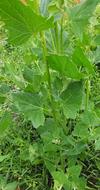Dear Reader, in this age of AI created content, please support with your goodwill someone who works harder to provide the human-made. Sign up at the top of the lefthand column or bottom of this page. You will receive my hand illustrated monthly newsletter RESTORE NATURE and access to the biodiversity garden design course as I write...and nothing else, I respect your time. I am also removing the advertizing as best I can as its become intrusive inappropriate and pays me nothing.
How to grow a tomate de árbol or tamarillo
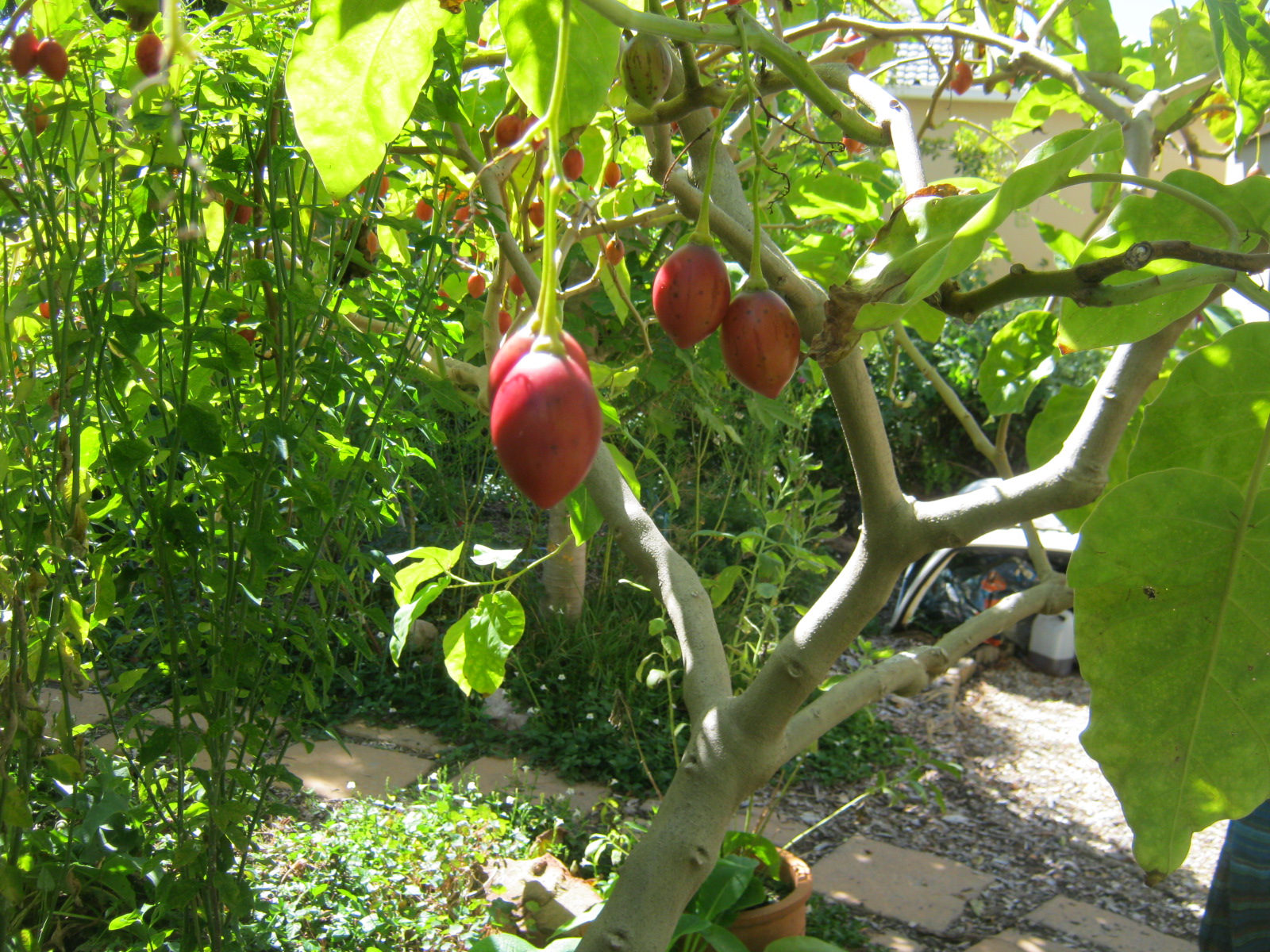 The mother plant of my tamarillos, in the Urban Farmstead workshop space in Tokai
The mother plant of my tamarillos, in the Urban Farmstead workshop space in TokaiTree tomatoes or tamarillos are as easy to grow as some tomatoes. Perhaps this is due to their close relation to tomatoes. Tamarillos are Solanum betaceum, whereas tomatoes are S. lycopersicum.
The name tamarillo was chosen by a New Zealand marketing board. In Spanish it is a tree tomato, tomate de árbol.
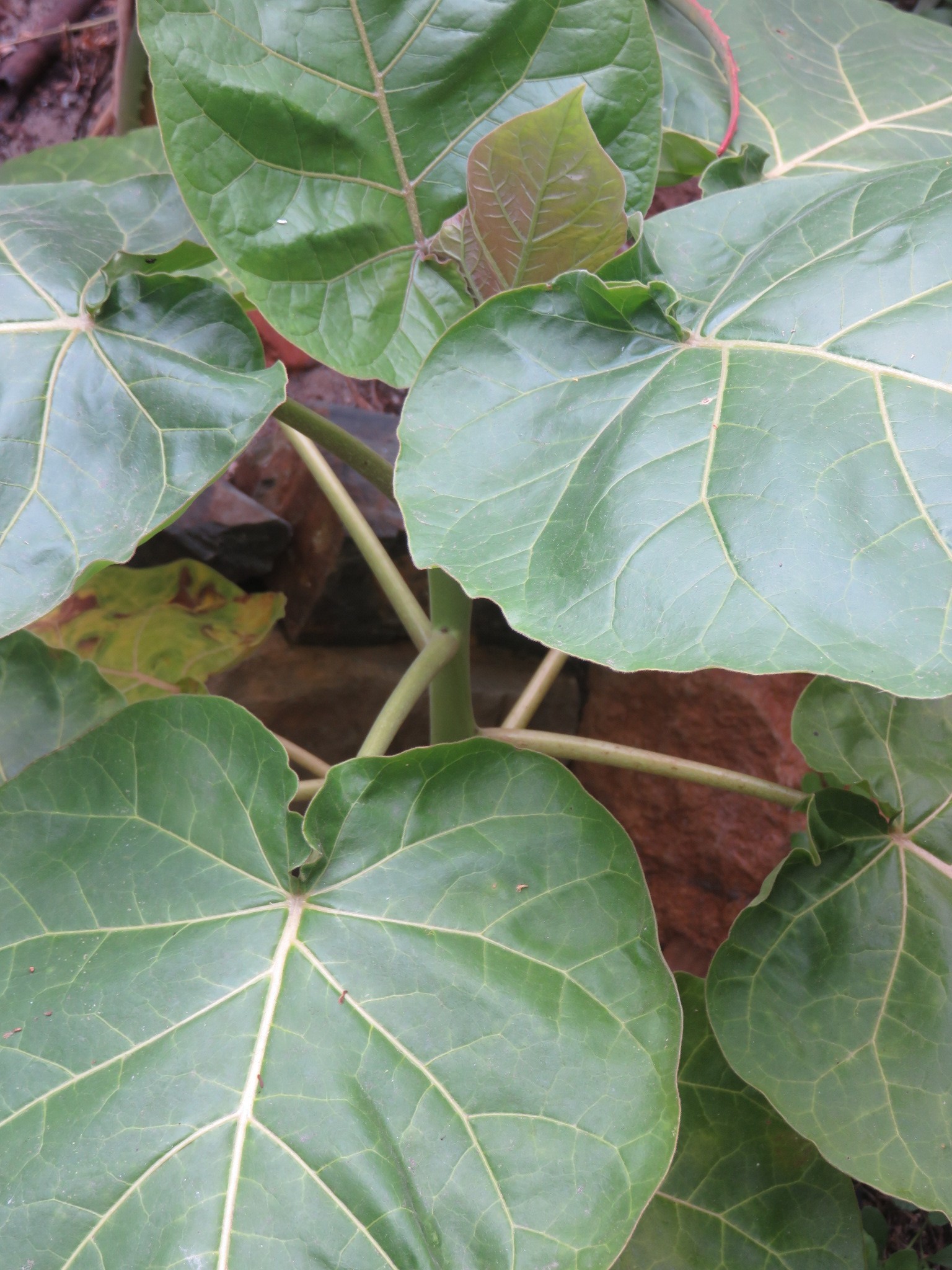 Plate sized, heart shaped leaves in a sapling
Plate sized, heart shaped leaves in a saplingThe tree has large heart shaped leaves with the texture and colour of tobacco leaves. Tobacco is also a close relative. The flowers are borne close to the stem and look like tomato flowers in form, but are larger and pale pink. The tree is self fertilizing.
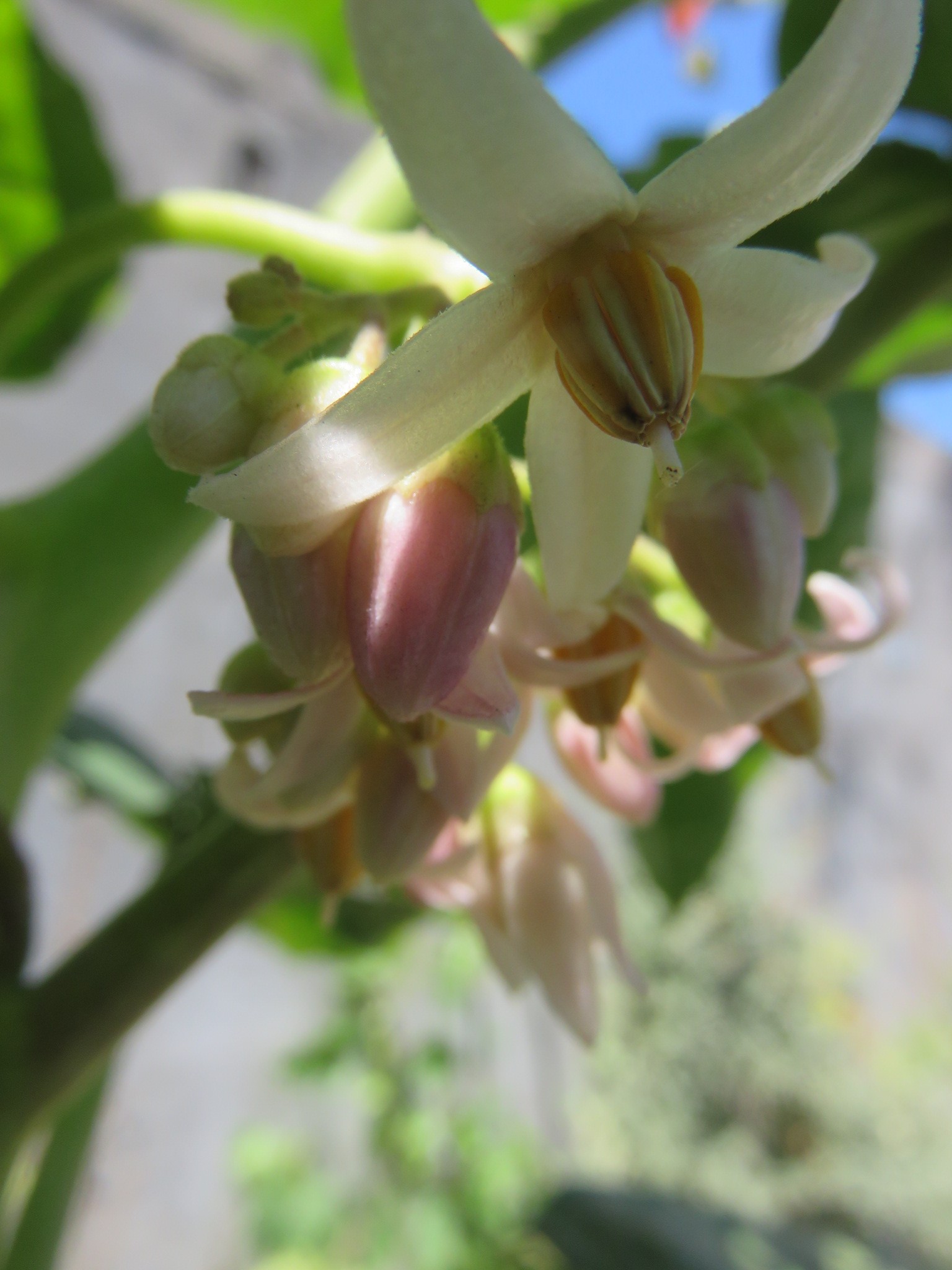 The exquisite hermaphrodite tomato tree flowers, eighteen months from seed to sexual maturity !
The exquisite hermaphrodite tomato tree flowers, eighteen months from seed to sexual maturity !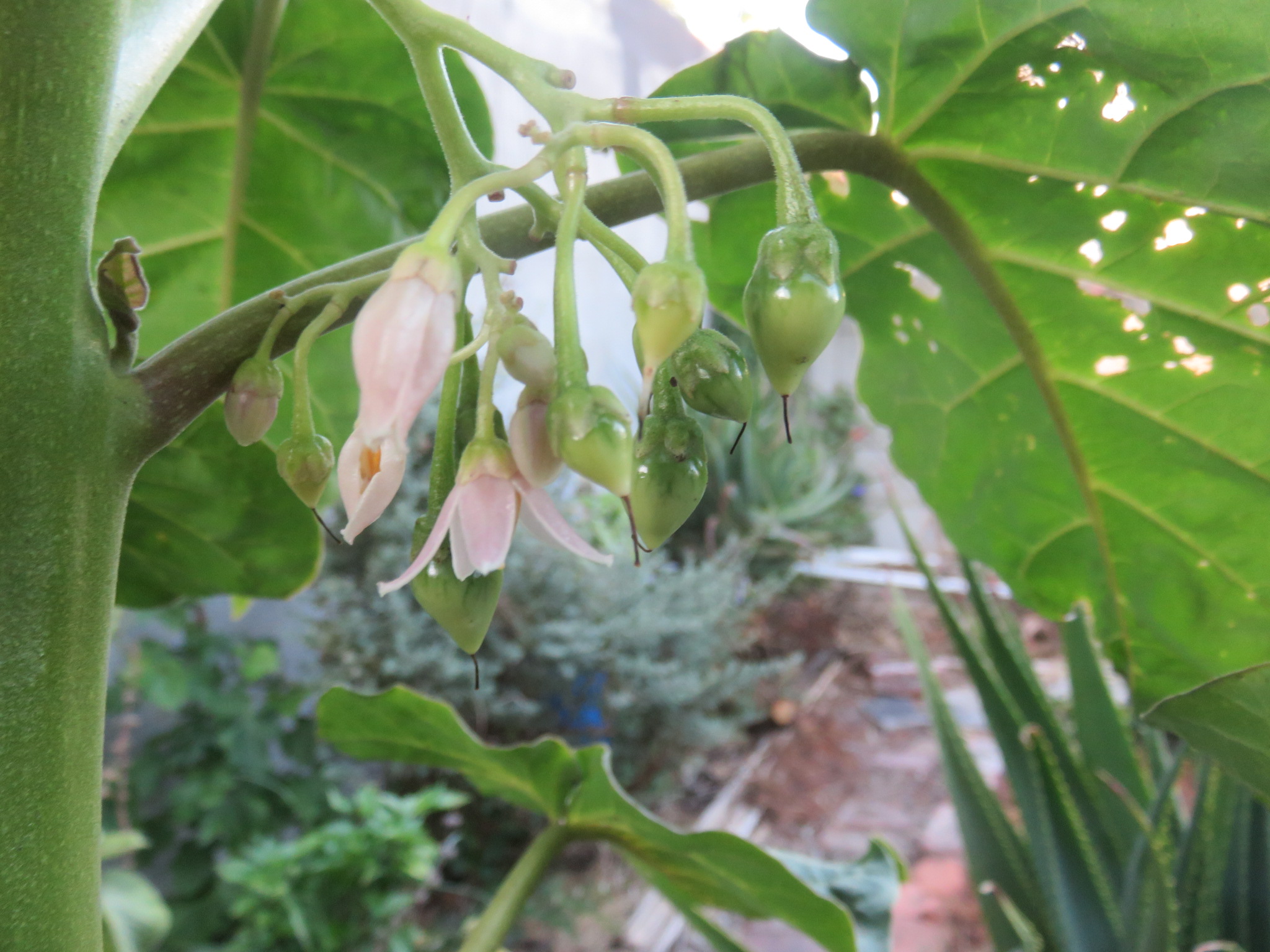 Tiny fruits appear soon after flowering, but will take 6 months to ripen on the tree
Tiny fruits appear soon after flowering, but will take 6 months to ripen on the treeCaring for tamarillo trees
Tamarillos originate in the Andes, mainly within tropical latitudes. Because of the cooler mountain climate it prefers a subtropical climate, with a high rainfall of 600-4000 mm and mild temperatures between 15 and 20 degrees C. It is intolerant of frost and drought stress (sourced from Wikipedia). Perhaps these reasons, rather than any soil requirements are why it is not doing well in the Cape summer which is regularly well over 20 C and bar one swift exception, rainless for the past 4 months.
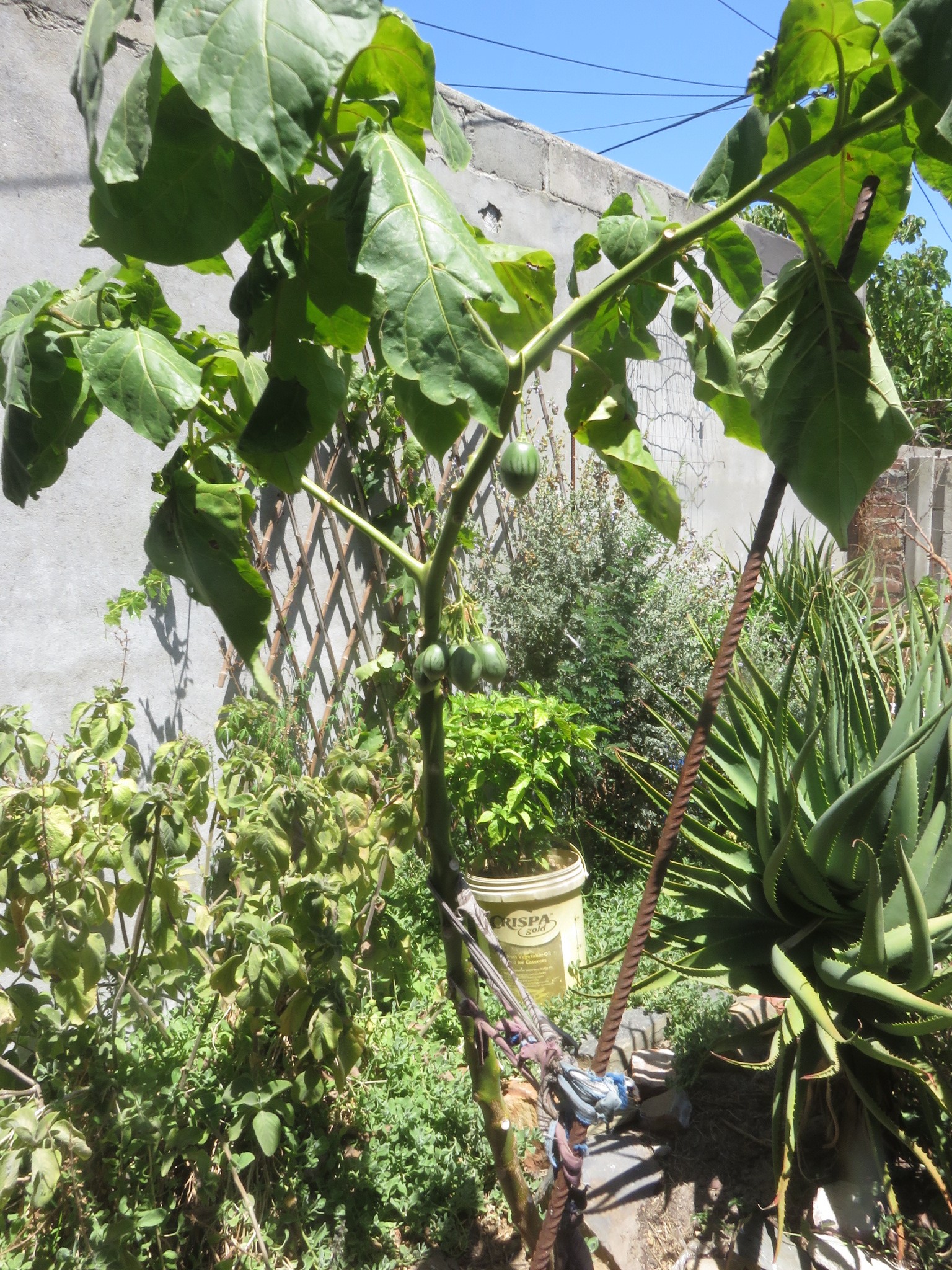 The tree looks haggard, due to drought, or heat, or poor feeding. I don't want it to get too large, so I'm not pampering it, but I would like it to survive.
The tree looks haggard, due to drought, or heat, or poor feeding. I don't want it to get too large, so I'm not pampering it, but I would like it to survive.In hot tropical countries it is successfully grown in the highlands, and does not fruit well in the lowlands.
The sun here in Cape Town is very strong, and in the tropics where tamarillos are native it is even stronger. I presume they would really need to be in a spot with lots of sun all day in any region with weaker sun. They don't seem to thrive in shade or semi shade.
The morphology of the two tamarillos I planted diverges a lot. The one which had late morning sun and shade for the rest of the day was markedly different to the one that got sun for most of the afternoon. The shaded sapling was a deeper green, with smaller leaves, and is only a meter tall at present whereas the tree that got more sun is two meters tall and has its first fruit, eighteen months after sowing. The fruit will, however, take half a year to ripen on the tree.
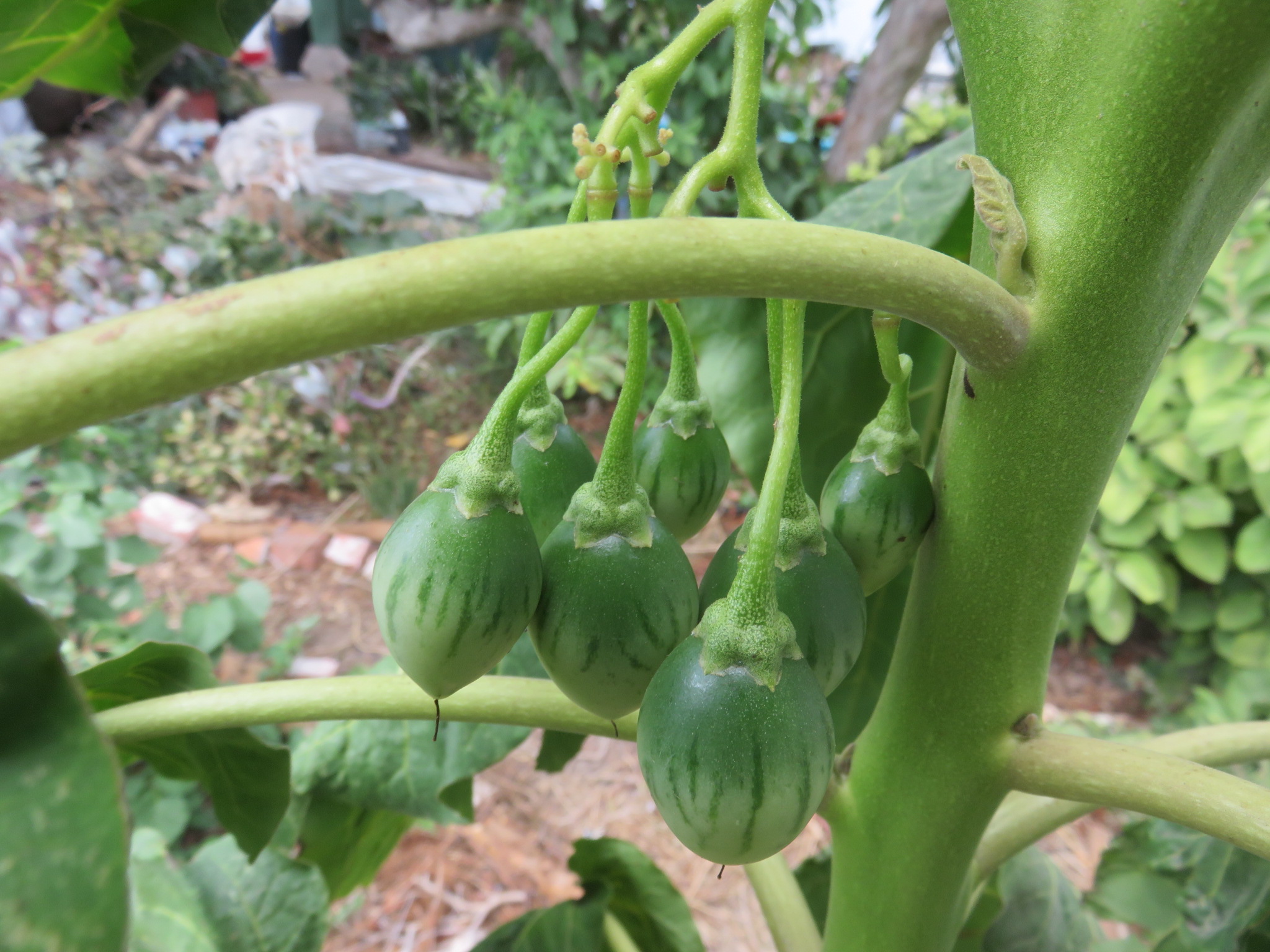 Green tamarillos, full size, weeks after flowering.
Green tamarillos, full size, weeks after flowering.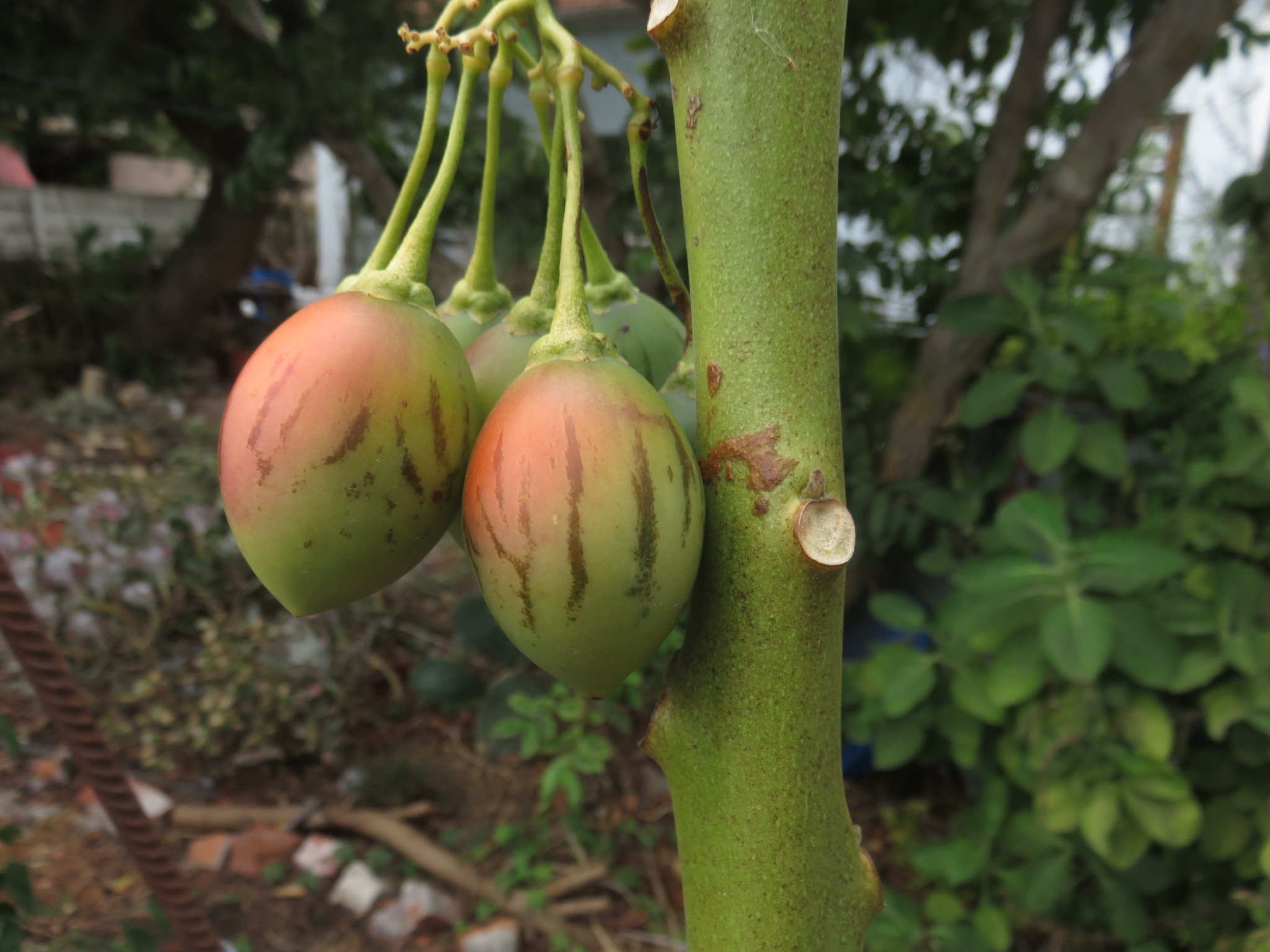 Months later. There is no rush to capture this delicate dawn like blush going into verasion.
Months later. There is no rush to capture this delicate dawn like blush going into verasion.From my experience they do indeed need a lot of water, and will wilt if not watered every day. However our tree soon recovers from wilting. When the rains return I will see if it recovers from the summer, or if the decline it has gone into after bearing is permanent. I have not added any additional feeding and it is recommended by the gardening experts that they be fed three times in summer.
The tree can grow up to five meters under favorable conditions. Fruiting, as you will see with my tree, starts in the second year, but is best from the fourth year. The tree is short lived, around 12 years.
Tamarillo or tomate de árbol.are very popular in South America and I will look there for recipes based on millennia of experience that show an appreciation of the nuances of its rather peculiar flavor.
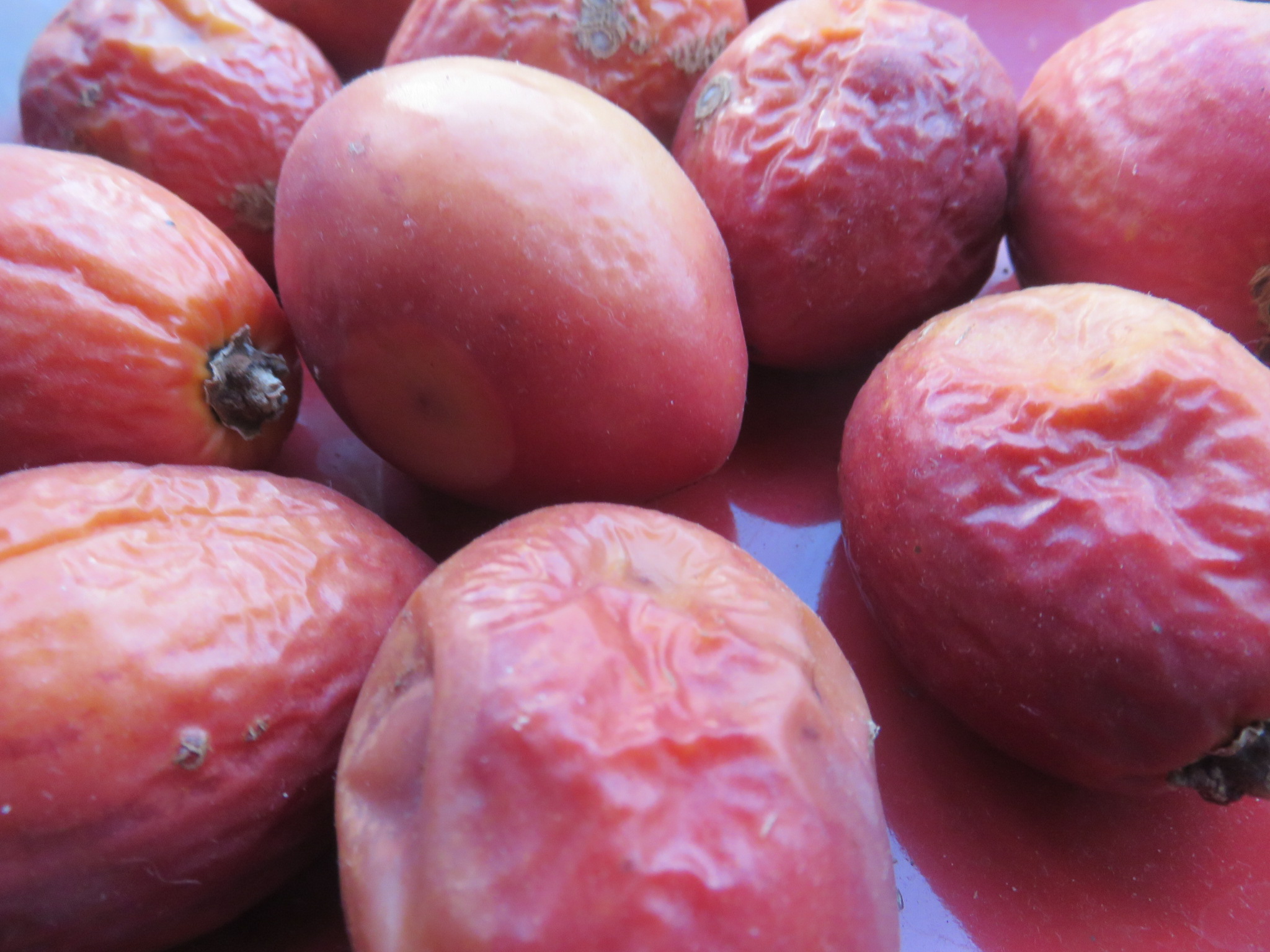 The seeds from these overripe fruit (originally bought at a greengrocer) came up like hairs on a dogs back. I let them die off too. The fruit had lovely colour but an unpleasant flavor.
The seeds from these overripe fruit (originally bought at a greengrocer) came up like hairs on a dogs back. I let them die off too. The fruit had lovely colour but an unpleasant flavor.Propagating tamarillos from seed
Collect the seed from an overripe tamarillo by spooning it out of the fruit. Choose fruit that are very tasty, or have the desired characteristics you wish to reproduce. I placed the pulp with seeds in a jar with a little water and fermented it for three days to make cleaning easier, but other people just wash the seeds. It will ferment by itself, there is no need to do anything. Then you can either dry the fruit out or sow them in a tray immediately.
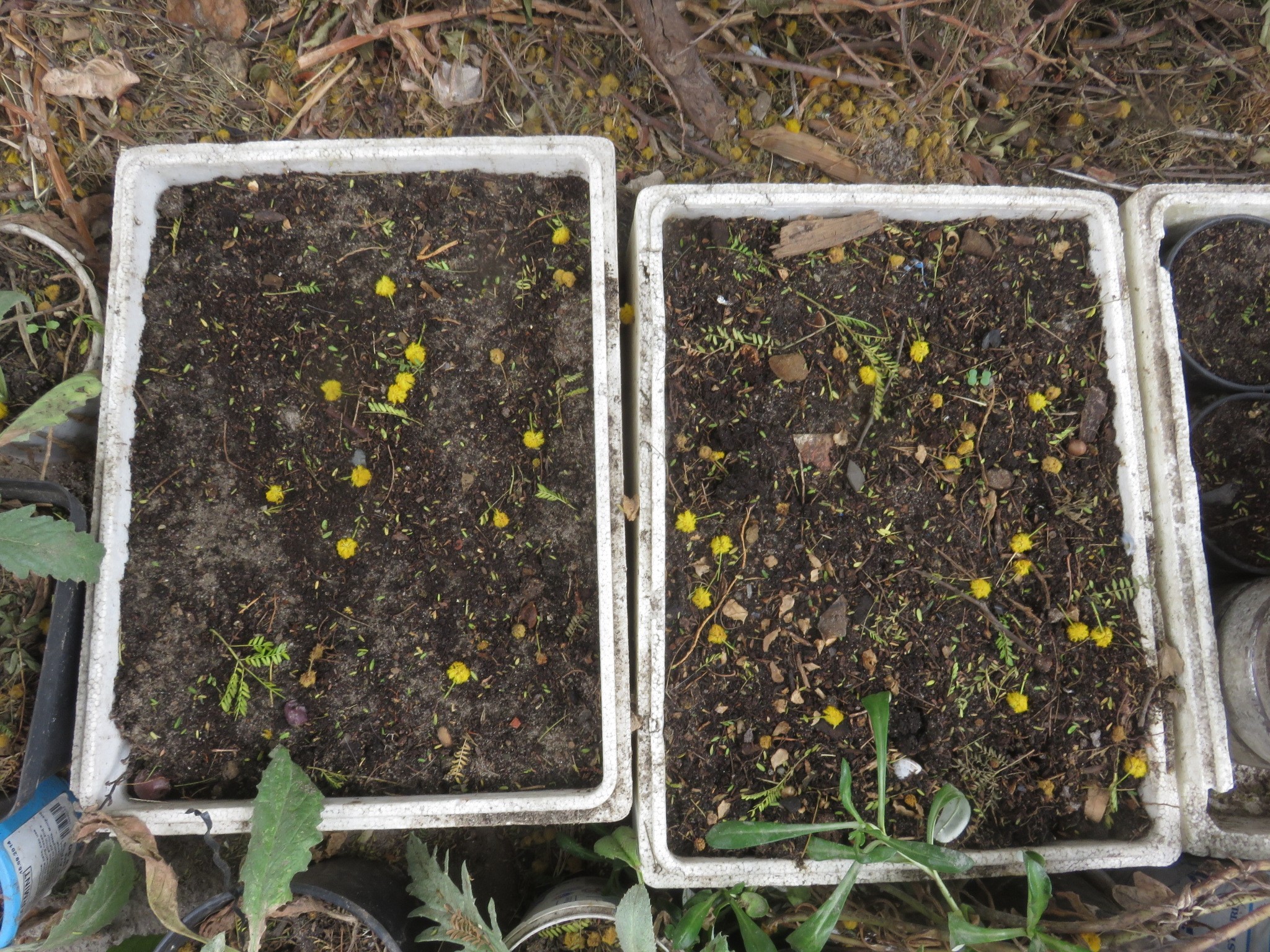 Recycled fish packaging. 40 x 30 x 12 cm polystyrene boxes are good for vegetable and some tree seed, and cuttings. The yellow balls are Acacia karoo flowers that drizzle down constantly.
Recycled fish packaging. 40 x 30 x 12 cm polystyrene boxes are good for vegetable and some tree seed, and cuttings. The yellow balls are Acacia karoo flowers that drizzle down constantly.Moisten the soil in the tray. Then scatter the seeds evenly and cover them with 3 mm of potting mix. Cover the tray with plastic to keep the soil moist, or spray the soil in the tray every day. You need a little patience, the seeds can take 7-8 weeks to germinate when the weather is cool. I sowed them in our mild autumn, in April. When they do come up the first two leaves look very like tomato seedlings, but they soon develop their broader, characteristic leaves which are very different to tomato leaves.
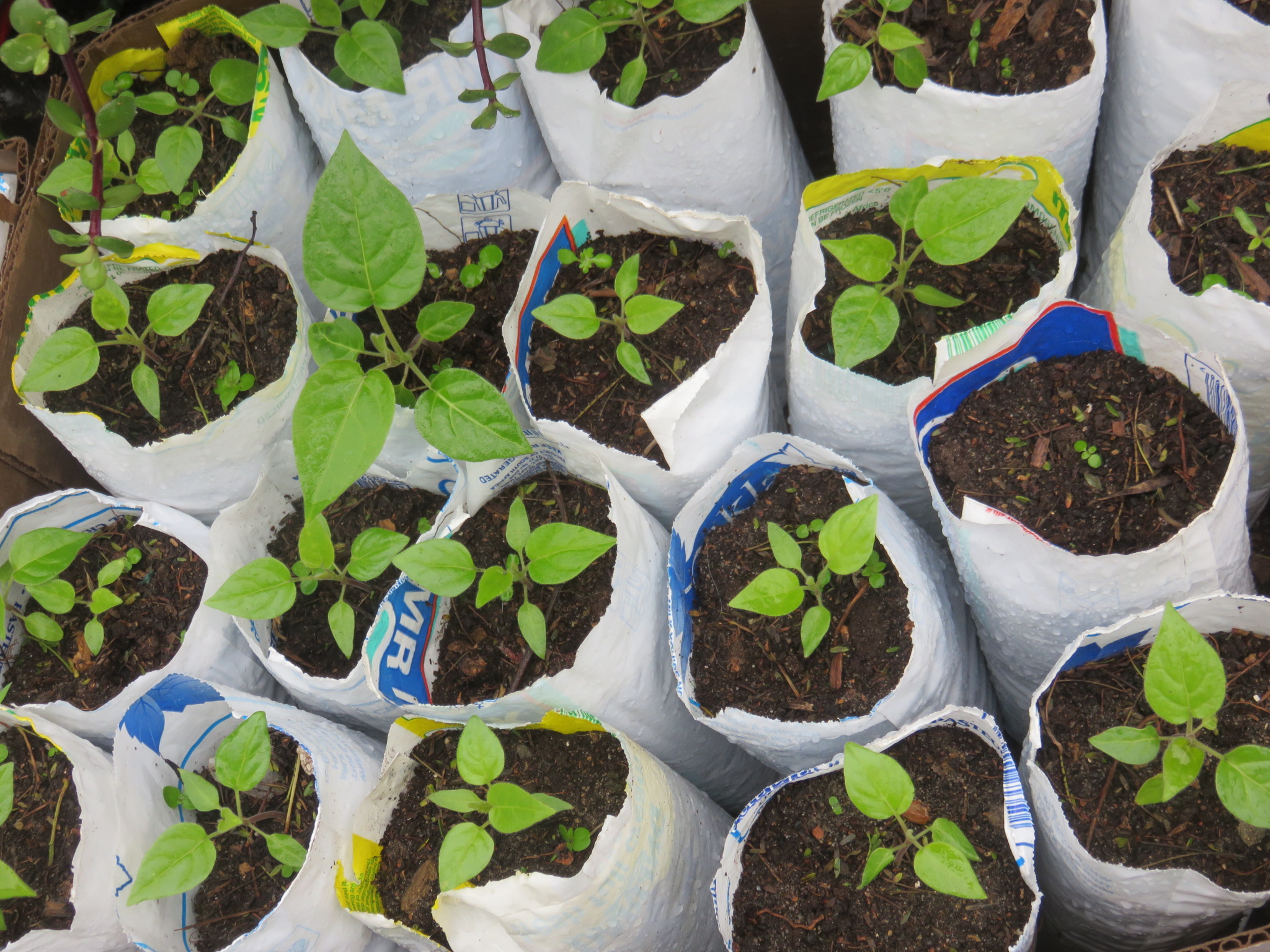 After the four leaf stage I planted the seedlings individually in recycled milk bags. later they were planted in the garden or succumbed to neglect.
After the four leaf stage I planted the seedlings individually in recycled milk bags. later they were planted in the garden or succumbed to neglect.Tamarillos germinate very well and you may be thrilled by the idea of having so many and giving them away or selling them. However, you will need to transfer them from the
tray to their own pots very soon. This is more urgent than with a
vegetable because the tamarillo is a rapidly growing tree and it will
become stunted by growing in crowded conditions and very likely
become sickly and die from fungal disease and blight.
I planted the tamarillos from the tray into individual pots with sand, to which I added some vermicast and compost.
I lost about 90% of my seedlings between the tiny six leaf and the arm length stages of growth. This was largely due to an overestimation of their drought hardiness, and the attentions of the garden mollusc. Germinating the seeds is one thing, getting a large healthy viable seedling is another.
When the seedlings were the length of my forearm, I planted them out in the garden. Those I did not plant out withered away.
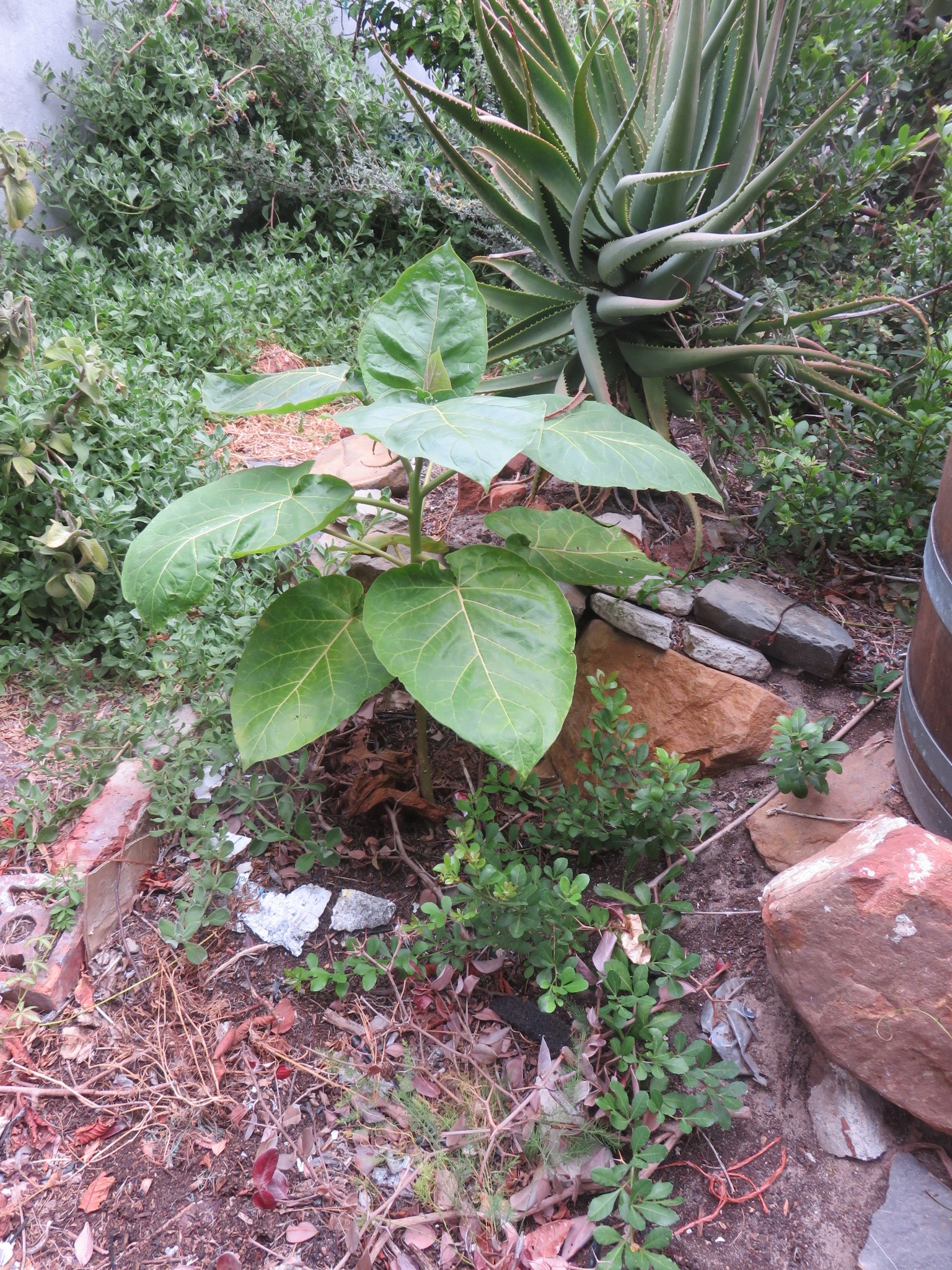 The seedling in a sunny spot thrived in winter.
The seedling in a sunny spot thrived in winter.They are not high maintenance. It is getting all trees to maturity which requires consistent watering and adding teas and vermicast, and repotting when they stall in growth or appear not to be thriving. For instance, a week or two of negligence with watering will negate all your hard work and the trees will not recover. Regular care may be needed for a year. They need to remain strong not to succumb to blights and the snails are their worst enemy, denuding a sapling in a pot in one night.
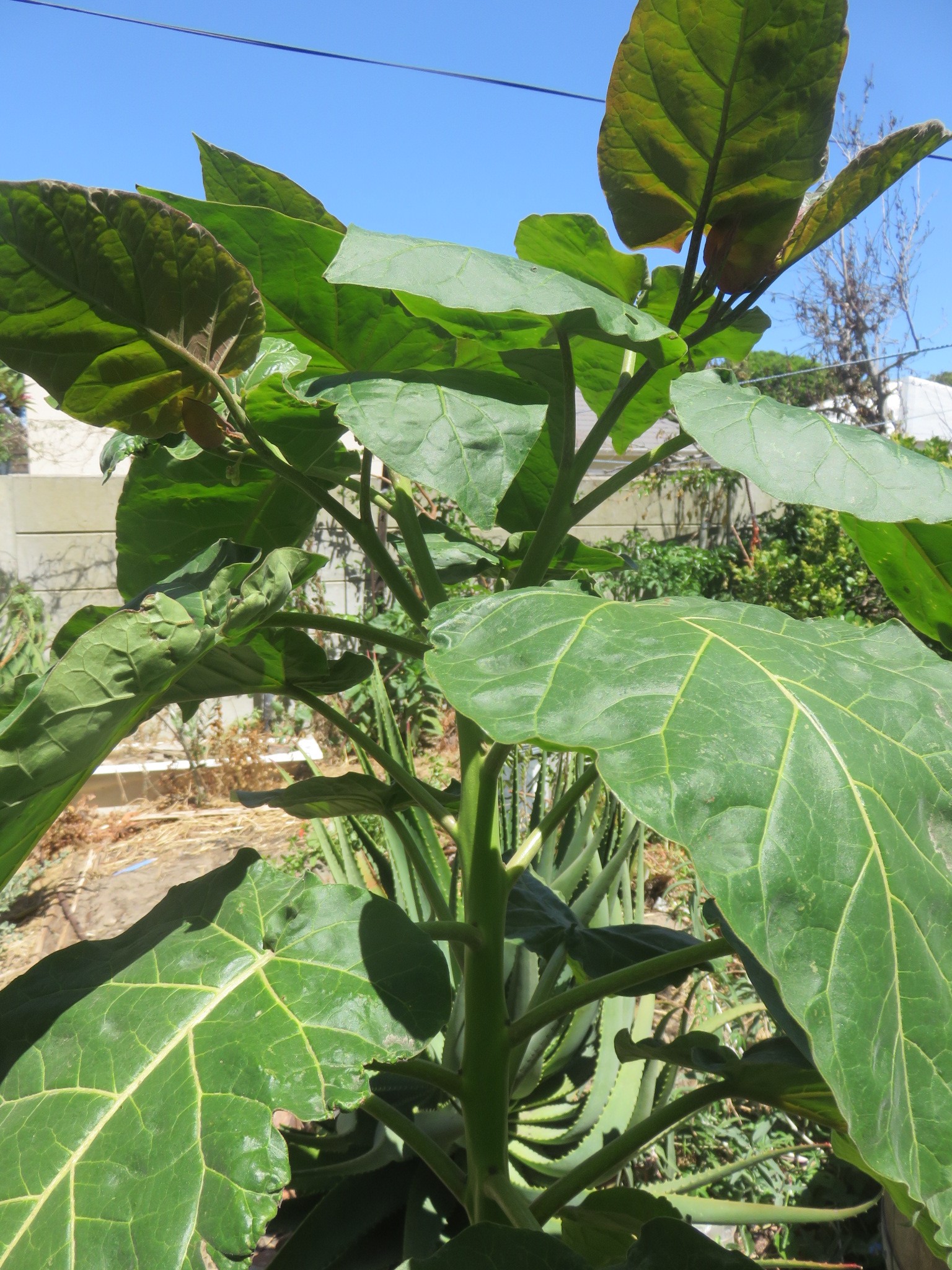 Our tomato tree at its most lush, 2 meters tall and making its first branches and blossoms.
Our tomato tree at its most lush, 2 meters tall and making its first branches and blossoms.
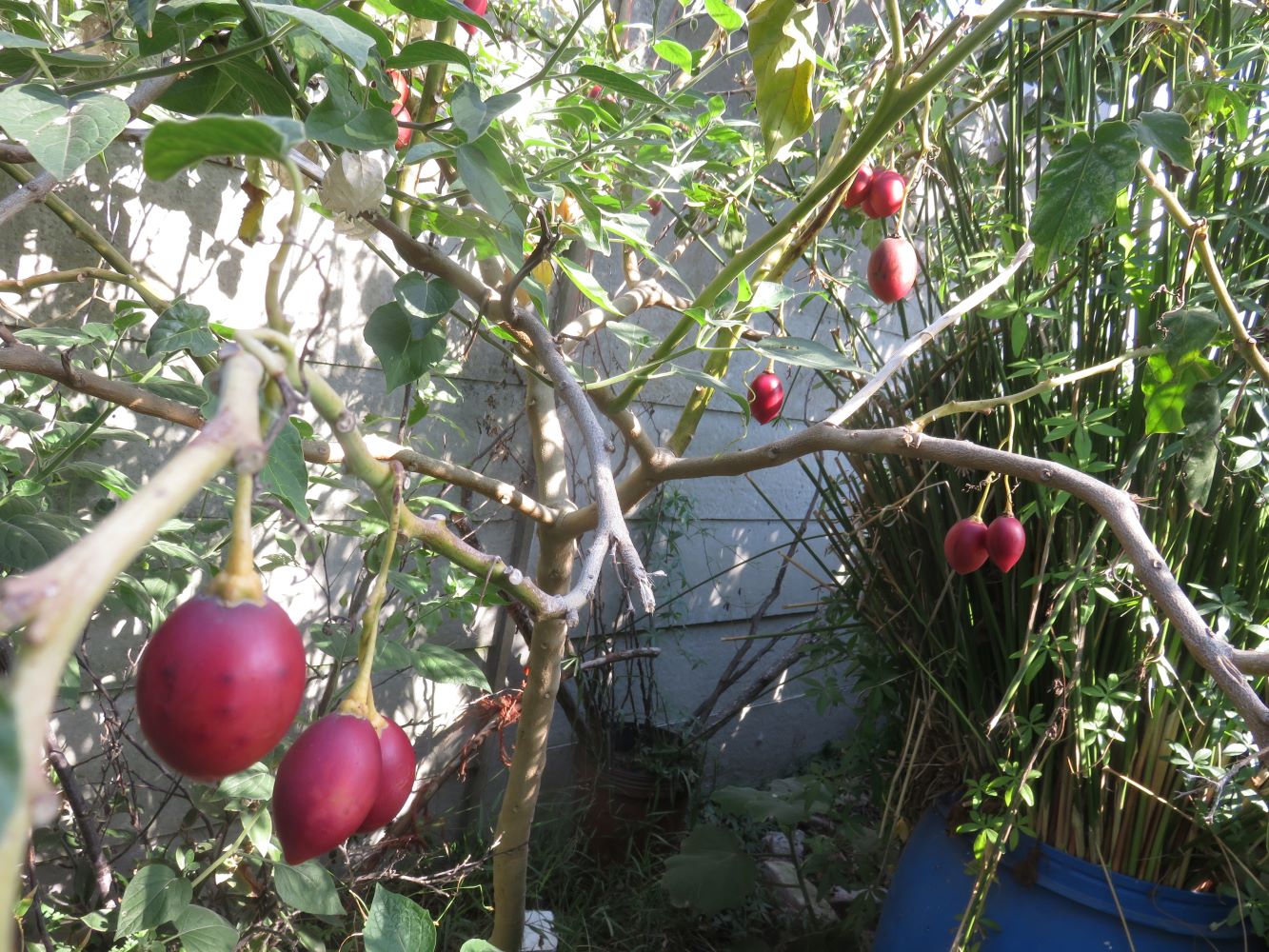 Tamarillo in shade Tamarillo in shade |
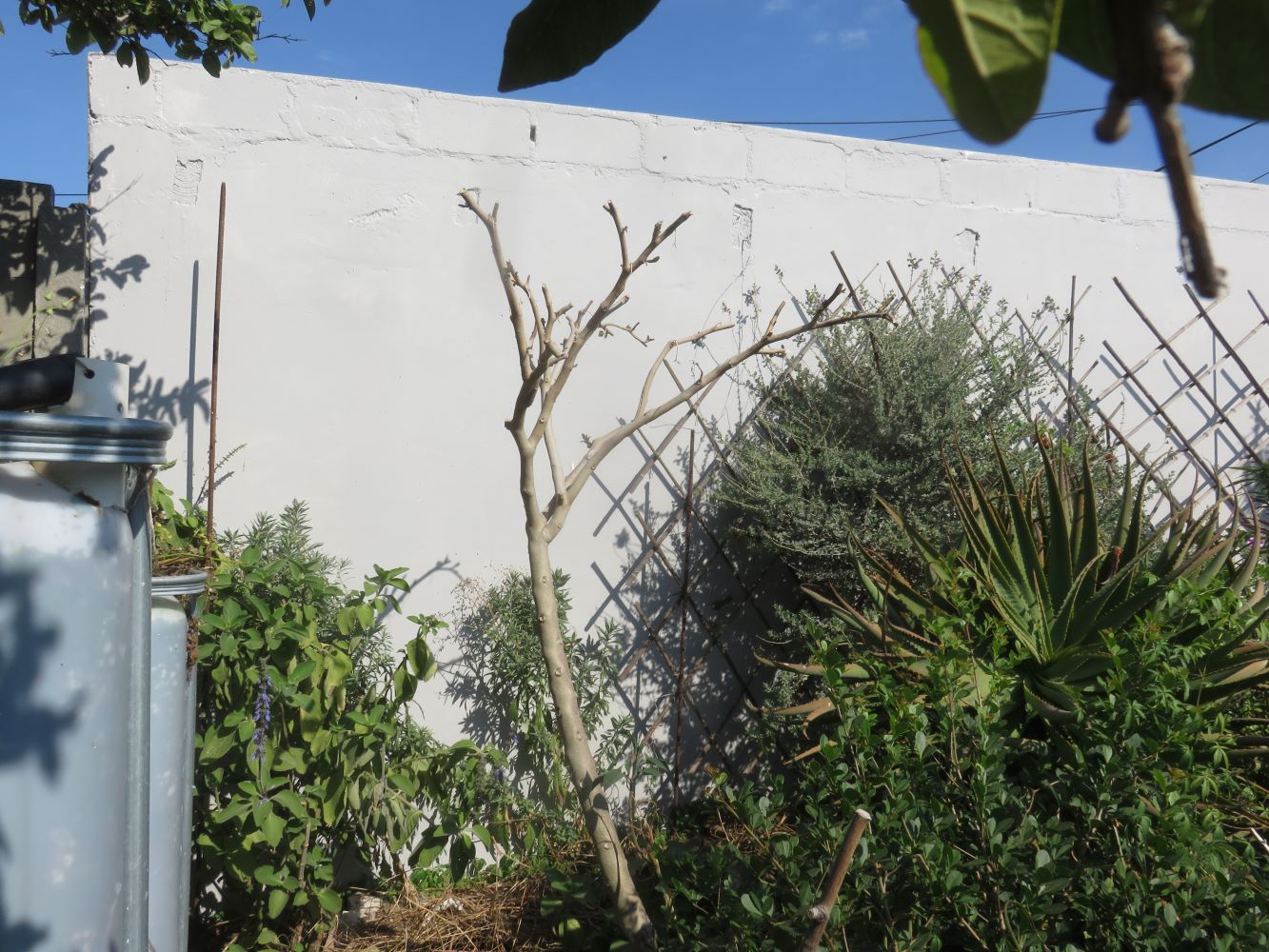 Tamarillo in sun Tamarillo in sun |
A couple of years later.... We've had lovely harvests yearly, with lots of fruit. The one that stood in the shade of the guava had yellowish fruit which tasted like grenadilla ice-cream with a hint of banana, took longer to grow, and fruit, and the other that grew in the sun had dark red fruit which are similarly dark and red in flavor. Suddenly the one in the sun shriveled up. I thought its day had come, they don't live long, or it had a pathogen, so I trimmed it heavily. I've seen new shoots on it today. The one in the shade has shifted from yellow to red fruit !
------
home page for lots of links on easy natural gardening
------
perennial food plants, good for the garden ecosystem, and more nutritious.
Restore Nature Newsletter
I've been writing for four years now and I would love to hear from you
Please let me know if you have any questions, comments or stories to share on gardening, permaculture, regenerative agriculture, food forests, natural gardening, do nothing gardening, observations about pests and diseases, foraging, dealing with and using weeds constructively, composting and going offgrid.
What Other Visitors Have Said
Click below to see contributions from other visitors to this page...
Lynn Greyling 




Hi, We've had a Tree tomato in the garden for many years. My second one died 2 yeas ago . I decided to propagate my own by placing washed seeds in a clear …
Agricultural officer 




I am from here, in the south western part of Uganda, just a few kilometers from Uganda Congo border. Here after, the first harvest of tamarillos, most …
What are these plants 




I planted some seeds, thought they were cantaloupe seeds, but I got these plants. Pls help me know what plants are these and their use.
Thanks
SEARCH
Order the Kindle E-book for the SPECIAL PRICE of only
Prices valid till 30.09.2023
Recent Articles
-
garden for life is a blog about saving the earth one garden at a time
Apr 18, 25 01:18 PM
The garden for life blog has short articles on gardening for biodiversity with native plants and regenerating soil for climate amelioration and nutritious food -
Cape Flats Sand Fynbos, Cape Town's most endangered native vegetation!
Apr 18, 25 10:36 AM
Cape Flats Sand Fynbos, a vegetation type found in the super diverse Cape Fynbos region is threatened by Cape Town's urban development and invasive alien plants -
Geography Research Task
Jan 31, 25 11:37 PM
To whom it may concern My name is Tanyaradzwa Madziwa and I am a matric student at Springfield Convent School. As part of our geography syllabus for this
"How to start a profitable worm business on a shoestring budget
Order a printed copy from "Amazon" at the SPECIAL PRICE of only
or a digital version from the "Kindle" store at the SPECIAL PRICE of only
Prices valid till 30.09.2023
